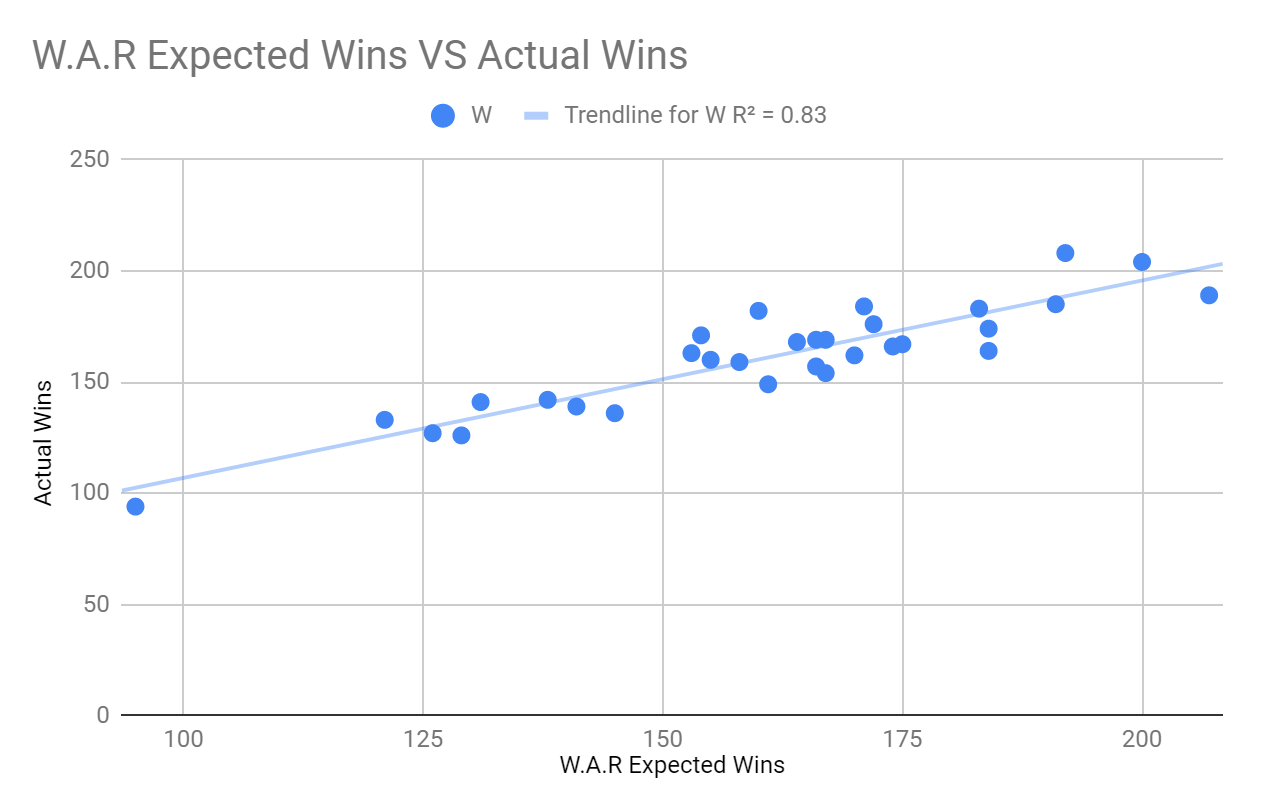NHL WAR
Registered User
- Sep 29, 2018
- 959
- 1,176
Hey guys. Many of you may have seen my original Wins Above Replacement post last fall. After taking a short break, I decided to make adjustments. I have just focused on forwards since, but I do intend to reintroduce defensemen and goaltender models in the future. Notable changes include the integration of expected goals and an increased importance on even-strength play compared to special teams. I ran the results dating back to the 2015-16 season. I feel that they are insightful, but at the same time honest to what happens on the ice. Nothing sticks out like a sore thumb. Here are the top 5 performers for each season of data:
2015-16
[TBODY]
[/TBODY]
2016-17
[TBODY]
[/TBODY]
2017-18
[TBODY]
[/TBODY]
2018-19
[TBODY]
[/TBODY]
WAR also works on a team level. The total WAR of a team's forwards plus the estimated number of games a team full of replacement level players would win lines up very well with the number of games a team actually wins. To be more clear:

If you would like to read a more detailed description and more importantly, see more results: A Winning Statistic
I have already started looking at a player's WAR after he signs a new contract or if there is a trade to aid my decision on whether or not it is a good deal. If you would be interested in seeing complete data set, just let me know and I will be happy to oblige.
If you have any other questions or requests, again, feel free to ask.
2015-16
| Player | WAR |
| Patrick Kane | 7.2 |
| Sidney Crosby | 5.7 |
| Anze Kopitar | 5.6 |
| Jamie Benn | 5.6 |
| Evgeny Kuznetsov | 5.4 |
2016-17
| Player | WAR |
| Connor McDavid | 7.7 |
| Sidney Crosby | 6.3 |
| Brad Marchand | 6 |
| Nikita Kucherov | 5.8 |
| David Pastrnak | 5.2 |
2017-18
| Player | WAR |
| Connor McDavid | 7.6 |
| Claude Giroux | 6.9 |
| Nikita Kucherov | 6.7 |
| Taylor Hall | 6.1 |
| Nathan MacKinnon | 5.9 |
2018-19
| Player | WAR |
| Nikita Kucherov | 8.4 |
| Sidney Crosby | 7.5 |
| Connor McDavid | 7.4 |
| Johnny Gaudreau | 6.9 |
| Steven Stamkos | 6.4 |
WAR also works on a team level. The total WAR of a team's forwards plus the estimated number of games a team full of replacement level players would win lines up very well with the number of games a team actually wins. To be more clear:
If you would like to read a more detailed description and more importantly, see more results: A Winning Statistic
I have already started looking at a player's WAR after he signs a new contract or if there is a trade to aid my decision on whether or not it is a good deal. If you would be interested in seeing complete data set, just let me know and I will be happy to oblige.
If you have any other questions or requests, again, feel free to ask.
